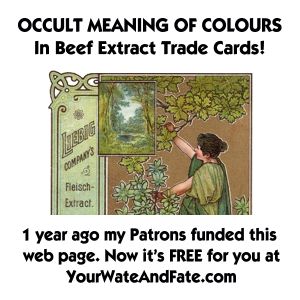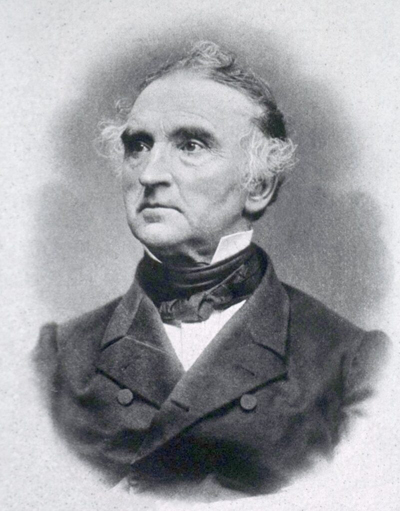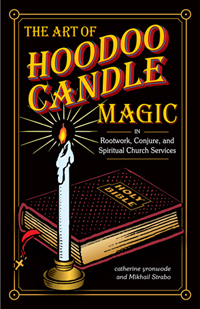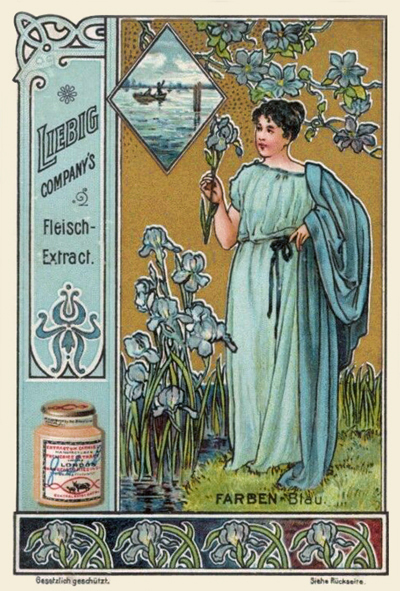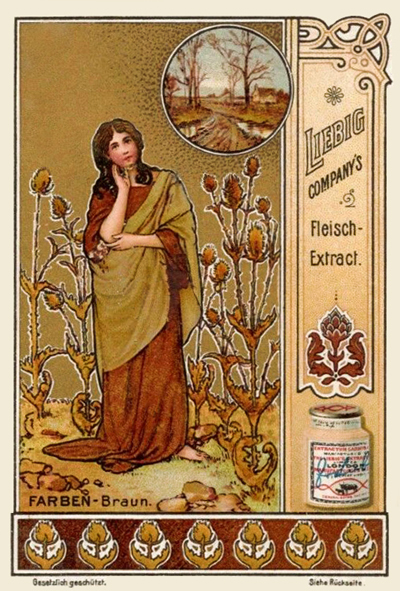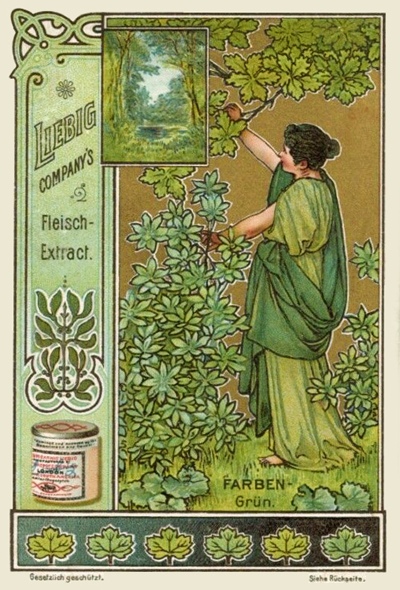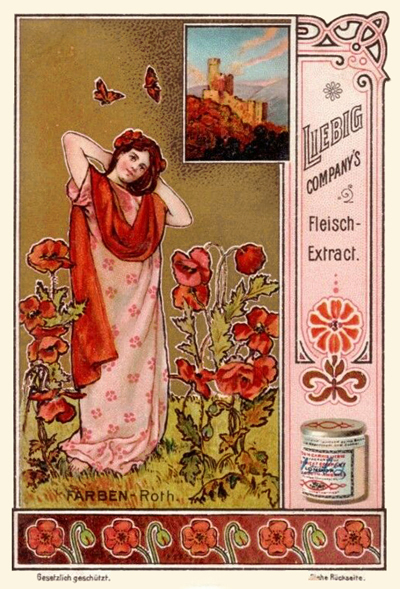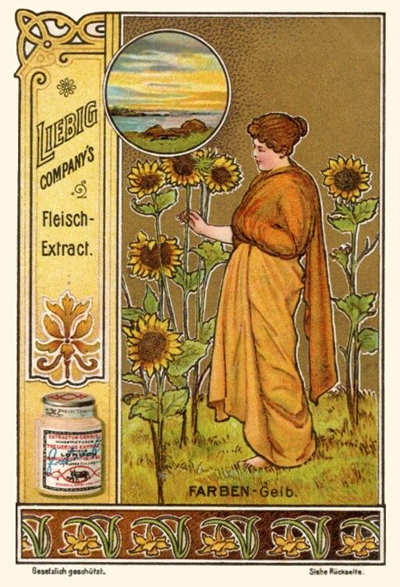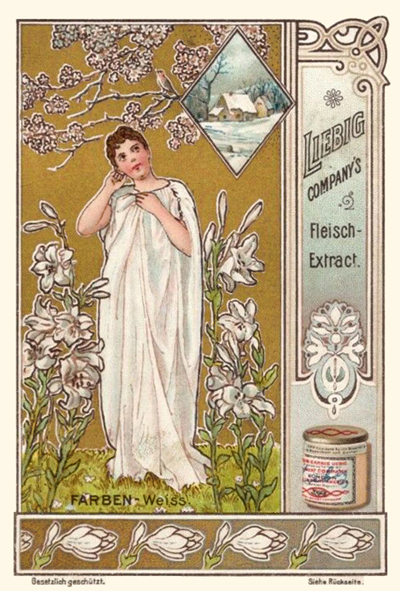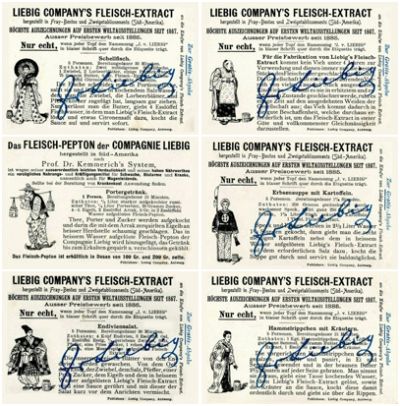Farben Trade Cards Series S-618 by Liebig Fleisch-Extract
My Patreon supporters paid for this page and had access to it one full year before the public did.
- Patreon Release Date: January 14th, 2023
- Public Release Date: January 14th, 2024.
Please tell your friends that they can subscribe to my Patreon stream for $2.00 per week:
Patrons; To discuss this and other Patreon pages with me, join my private Patreon Forum:
Support Your Wate and Fate
All of the material you have access to here -- the instructive booklets, the nostalgic postcards, the boldly graphic ephemera, and all of the historical information researched and shared from the mind of the woman who is making it all happen -- can easily fit into one 8 x 10 foot room in an old Victorian farmhouse, but you would never see it without the investment of the time it takes to produce such a site and the caloric input such a site requires in the form of food for the writer, graphic designer, and database manager, as well as the US currency needed to pay for the computers, software applications, scanners, electricity, and internet connectivity that bring it out of that little room and into the world.
So, as you can see, this site is the darling of many, and it is growing at a rapid rate ... but although it is "free," there also is a cost. The financial support of my Patreon subscribers -- my Patrons -- underwrites this cost.
Farben Series S-618 by Liebig
Liebig Tade Cards
One of the most prolific publishers of trade cards during the late 19th and early 20th century was the Liebig company. Despite the German name, Liebig was an English company that became multinational. Its product was a concentrated meat extract called Fleisch-Extract -- a paste form of salted bouillon that preserved the flavour and nutrients of beef. The method of extraction was invented by the German organic chemist Justus Freiherr von Liebig (12 May 1803 – 20 April 1873) -- and note that Liebig's zodiac sign is Taurus the Bull (and he shares my birthday!) and his product was based on beef. Commercial production of Liebig Fleisch-Extract began in 1850. Most of the meat came from South American cattle and was processed in Fray-Bentos, Uruguay, and Colón, Panama.
Liebig Fleisch-Extract was packaged in little jars and sold all around the world. The inclusion of colourful, collectible, and educational chromolitho trade cards with every package of Liebig Fleisch-Extract began in 1870. The early cards were gilded with brass powder ink, but unlike postcards of the era, they were not embossed. The last chromolithographed cards were released in 1939, but reprints interspersed with new sets continued until 1975. During this more than 100-year run, at least 11,226 different cards were produced, as well as a number of artistic menu cards with a blank area for a hand-written menu.
The thematic cards were printed in sets of six, and each set touched on one topic of interest. These topics covered a vast range of human knowledge, including history, mythology, world travel, theatre, zoology, botany, mechanical engineering, fairy tales, amusements, psychology, country life, military uniforms, domestic animals, poetry, warfare, gaming, architecture, opera, transportation, factory work, indigenous costumes, dances, festivals, and religion. The only limitation was "six cards per topic," although sometimes this restriction could be avoided by publishing several sets on a single topic, such as "Sea Life" or "Puzzles." Occasionally a set of 12 cards would be released, but this was not common.
Due to the multinational distribution of the product, Liebig cards were printed with minimal text on the front and dense text on the back in a variety of languages, including English, German, Italian, Spanish, French, and Belgian. The card backs contained advertising, often accompanied by recipes that included the use of the Fleisch-Extract and small pen-and-ink illustrations. These back-of-card illos rarely bear a logical relationship to the topic of the card set; for instance, the back of a set on mushrooms might be decorated with circus clowns and a set on human emotions might be decorated with fantasy images of children, sailors, and draymen carting about giant jars of Liebig Fleisch-Extract.
Colour Magic
Because Liebig trade cards are never text-centered, i have included here some brief excerpts on the symbolic and occult meanings of the colours from "How to Conduct a Candle Light Service" by Mikhail Strabo (Syndey J. R. Steiner), published by Guidance House in 1943, which is included in full in my own book "The Art of Hoodoo Candle Magic in Rootwork, Conjure, and Spiritual Church Services" by catherine yronwode and Mikhail Strabo, published by Lucky Mojo in 2013.
$12.00 BOO-GRI-AHCM
Farben (Colour) Cards from Liebig
This set of cards was issued in 1900. The topic is colour symbolism, as seen in nature and as applied to fabric dyes on the simple classical garments worn by a series of beautiful and modest young women.
Choosing colour as a topic clearly demonstrates the limitation of the Liebig six-card rule: We get Blue, Green, Yellow, Red, Brown, and White, but there is no Purple and no Black in the set, and Orange is squeezed into Yellow without being noted as such. Considering that most colour-wheels are built around the concept of three primary and three secondary colours, for a total of six colours, the inclusion of Brown and White, and the elimination of Orange and Purple, is unexpected.
Each card repeats the botanical colour theme in several ways, with low-growing and high growing plants, a rural landscape, a stylized heraldic ornament based on a flower, and a stylized art nouveau border of repeated floral images rendered in shades of the chosen colour.
BLUE
FARBEN - Blau
COLOUR - Blue
- Dress: Light and Medium Blue
- Flowers: Clematis above, Iris below, a border of Iris, a Fleur-de-Lis ornament
- Landscape: A sea-scape with a boat under a partially clouded blue sky
"BLUE is the colour of spirituality. It ranges from the light faint shades of sea spray and periwinkle to the brightness of cyan, and thence to rich cobalt, deep indigo, somber navy, and darkest midnight blue. From the foundational religiosity of lapis and the sacredness of shamanic turquoise, to the clear cerulean sky blue of pure spirituality, and down to the deep dark blue of depression, blue is the colour of devotion. It is the colour of supreme faith. It is the symbol of the waters of life. In spiritual thought, medium blue indicates the nobility or royalty of the individual who has areached a higher plane of understanding and attainment, while sky blue is a significator of spiritual healing and peace." -- Mikhail Strabo
BROWN
FARBEN - Braun
COLOUR - Brown
- Dress: Tan and Reddish Brown
- Flowers: Dried Thistles below, a border of Dried Thistles, a Thistle ornament
- Landscape: A muddy dirt road and a thatched farm cottage beneath bare brown trees
"BROWN is a vital colour. It is compared with the earth which is the material source of the things that sustain us in our physical manifestation. It is the colour of humility, of the effacement of self in the desire to reach higher attainment. It is a transformation into a new life. Witness the leaves that turn brown in the fall, a preparation for their long sleep, so that they may emerge once again, fresh, revitalized, and new in spirit. Brown is symbolic of the magnetism that we exude, that attracts us to others, that attracts others to us, the magnetism that is so necessary to us all. It is, above all, the creative colour of reality." -- Mikhail Strabo
GREEN
FARBEN - Grün
COLOUR - Green
- Dress: Chartreuse and Emerald Green
- Flowers: Violets and Azaleas below, Oak above, a border of Oak, a Mistletoe ornament
- Landscape: A green forest glade in Spring
"GREEN is indicative of sympathy, understanding, and charity, from the bright green that indicates love of the outdoors, nature, and the wild, through the dark greens, forest greens, and hunter greens that indicate diplomacy, tact, and economic stability, to the murky and the acidic greens of insincerity, falsehood, trickery, jealousy, and deceit. Green is the colour of development, growth, worldly power, and property. It represents the reward for our season of toil, struggle, and application. It is the colour of our earthly and spiritual reward. In Spiritual healing, green indicates generation and regeneration, especially in matters of financial abundance." -- Mikhail Strabo
RED
FARBEN - Roth
COLOUR - Red
- Dress: Pink and Red
- Flowers: Poppies below, Butterflies above, a border of Poppies, a Chrysanthemum ornament
- Landscape: A stone castle above an Autum-red forest at Sunset
"RED is called the colour of the life force. It represents all our life processes and activities, from the purest motives to the basest. It is the colour of love, passion, and ardor in its various stages, from the pure selfless love of rose to the uncontrollable anger, violence, and lust of blood-red. It also indicates strength and mastery. It is the colour of passionate sexuality, but people who become angry also "see red." This is an indication that we must struggle to overcome our negative passions before we can achieve masterful love. Red is the colour of Mars and of iron rust. It is used in Spiritual healing to overcome anemia or diseases of the blood." -- Mikhail Strabo
YELLOW
FARBEN - Gelb
COLOUR - Yellow
- Dress: Golden-Yellow and Orange
- Flowers: Sunflowers below, a border of Daffodils, a dried leaf ornament
- Landscape: A river at Sunset
"YELLOW indicates intellectual effort, active mentality and mastery. It runs the scale from pale straw yellow through sunshine yellow and gold to the ranges of yellow-orange that border upon red-orange. Yellow is the colour of intellectual power and successful mental activity. It is the colour of the Sun at noon, and the colour of the halos of the angels and saints. It is the colour of gold, and just as gold, which does not tarnish, is presumed to be the highest form of metal, so yellow is a colour that represents the highest form of spiritual power, success, and attainment. In Spiritual healing services, yellow is the colour that is used to cure headaches." -- Mikhai Strabo
WHITE
FARBEN - Weiss
COLOUR - White
- Dress: White
- Flowers: Lilies below, Apple Blossoms above, a border of Snow Drops
- Landscape: A snow-covered farm-house in a snowy landscape under bare Winter trees
"WHITE is the positive pole of all thought, the shade that reflects all colours. It represents purity and faith in all things. Angels are pictured as clothed in white. Spirit manifestations are white. White is also an indication of the purity of our intentions. That is another reason it is often used in association with a candle of a particular colour. White is the shade of the highest plane. It is usually taken to be the sign of a master. Pure white is a shade that is rarely, if ever, found in this life. What we call white is usually tinged with another colour, such as yellow, blue, or violet. A white candle at a church service symbolizes the world of Spirit." -- Mikhail Strabo
The Card Backs
The reverse sides of these cards show a series of pen-and-ink studies of Asian people who are carrying or standing next to jars of Liebig Fleisch-Extract. Five of the six cards are surprinted with the signature "J. Leibig." The card that lacks a signature is also unusual in that it advertises a product called "The Fleisch-Pepton of the Liebig Company," which was apparently associated with "Prof. Dr. Kemmerich's System" and was available in 100 gr. and 200 gr. amounts.
The recipes on the six cards all include Fleisch-Extract. They are shell-fish with sauce, a robust alcoholic beverage called Porter-Drink, made with tea, porter, sugar, and Fleisch-Extract (!), endive salad with dressing, split-pea soup with potatoes, and mutton ribs with herb sauce. A sixth card back tells the buyer that in the production of Liebig's meat extract, no cattle under the age of a four are used and only the best pieces of muscle-meat go into the production of this product, which is of guaranteed uniformity.
Collecting Liebig Trade Cards
I have quite a few beautiful gilded chromolitho Liebig sets in my collection of trade cards. Only a few have even a remote link to magic, mysticism, or divination, but among them are some fine cards on deities, a number of which i have made use of to illustrate pages about Pagan gods and goddesses at AIRR, The Association of Independent Readers and Rootworkers. I may put some more up here at Your Wate and Fate if anyone expresses interest.
Keeping track of -- and collecting -- the 11,226-plus Liebig images has been the obsession of many art fans over the past 150 years. Several sorting systems have been published, but the most often referenced catalogue is that of the Italian publisher Sanguinetti, hence the set featured here, "Farben," is given the number S-618, indicating that it is the 618th set catalogued by Sanguinetti.
For those who may wish to learn more about these cards, i offer the following links:
"Nominated list of all sets with pictures" at Cartolino I think that by "nominated" the author means "enumerated." This is your basic list. Click on the number to see a small representation of the set.
Liebig complete illustrated catalog at Cartolino To use this series of small reference images you first need to know the set's Sanguinetti number. Or just play it like a game of sortilege and see what comes up!
For those interested in collecting the cards, i recommend eBay, although a number of specialized trade card companies also handle them. The cards are generally sold in sets, but you may not get matching backs. For example, my set on Colours, shown here, consists of five with German backs and one with a French back.
See Also
catherine yronwode
curator, historian, and docent
Your Wate and Fate
Special thanks to my dear husband and creative partner nagasiva yronwode for illustration scans and clean-ups.

